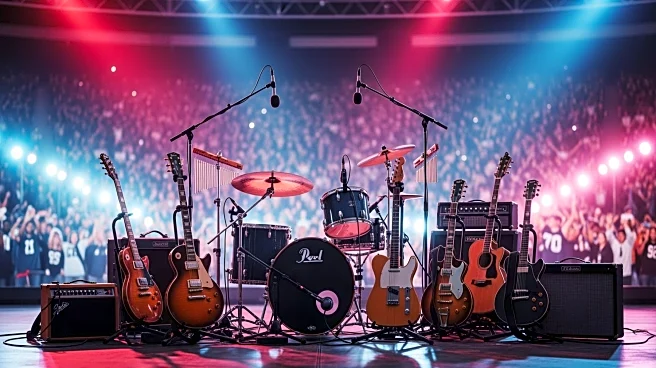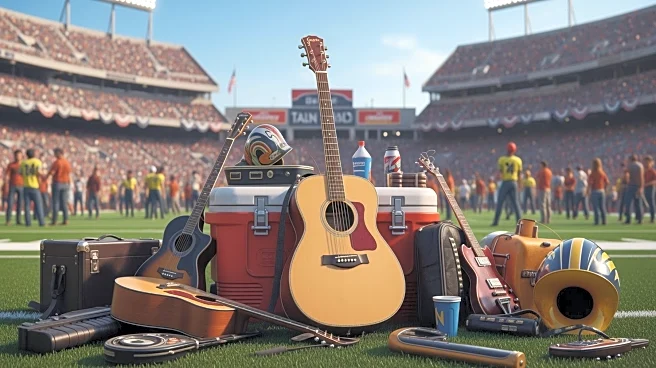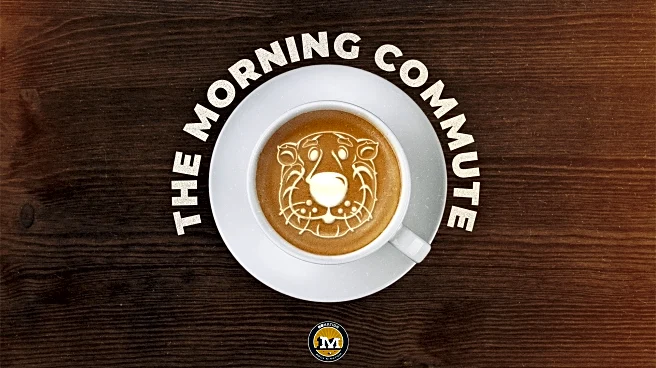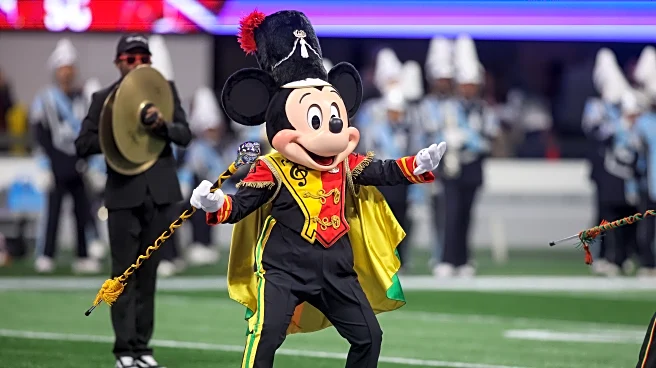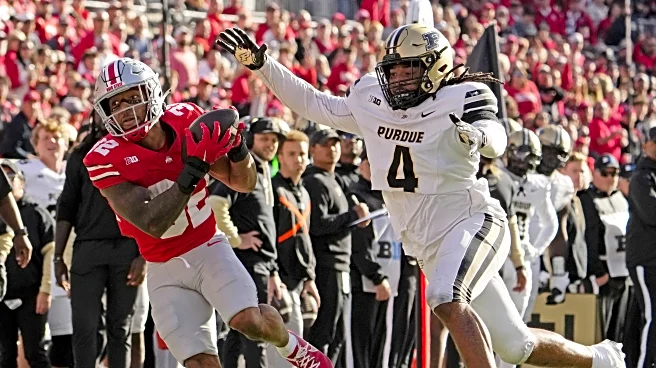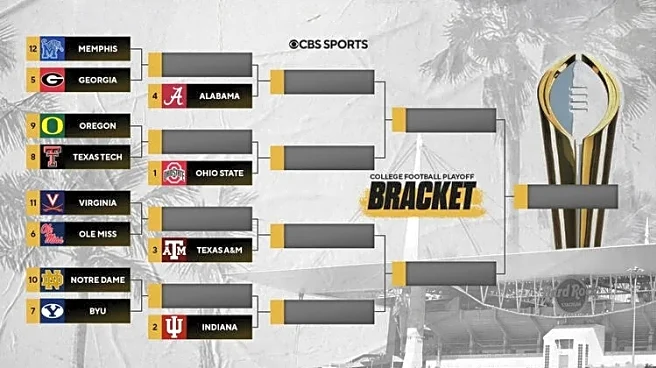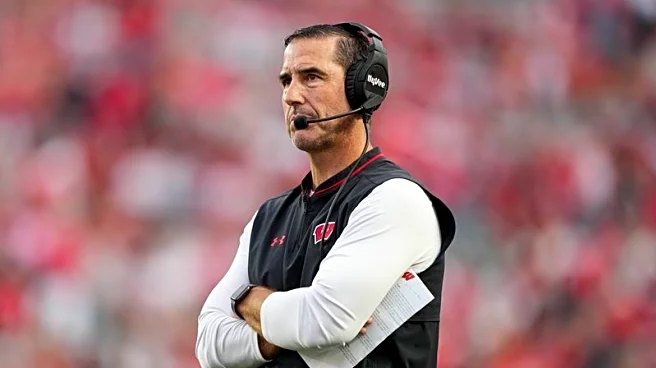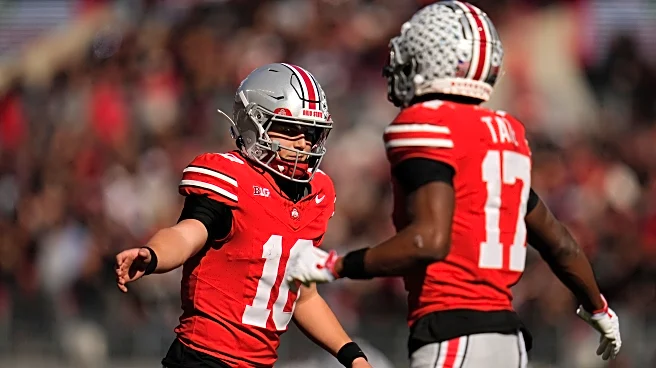What's Happening?
Garth Brooks' rendition of 'Callin’ Baton Rouge' has become a staple at LSU's Tiger Stadium, energizing fans with its stadium-friendly vibe. Brooks aimed to create a song that would resonate in large venues,
and it has become a war cry for LSU fans. This trend of using popular music as stadium anthems is spreading across college football, with various schools adopting songs that enhance the game-day experience. Michigan uses 'Mr. Brightside' by The Killers, while Florida fans sing Tom Petty's 'I Won’t Back Down,' and Wisconsin fans jump to House of Pain's 'Jump Around.' These songs are strategically played to maintain fan engagement throughout the game, especially during breaks.
Why It's Important?
The integration of popular music into college football games reflects a shift in how schools engage with fans, blending traditional pep bands with modern anthems to create a dynamic atmosphere. This approach not only enhances the game-day experience but also helps retain student attendance during games. The use of songs like 'Mr. Brightside' and 'Jump Around' has become a cultural phenomenon, influencing student choices and fostering a sense of community. Schools benefit from increased fan loyalty and engagement, which can translate into higher attendance and revenue. The trend underscores the evolving nature of sports entertainment, where music plays a crucial role in fan interaction.
What's Next?
As schools continue to explore ways to enhance the game-day experience, the use of popular music is likely to expand. Universities may seek new anthems that resonate with their unique cultures and fan bases. Garth Brooks is working on a new song, 'Cowboy Blood,' intended for Oklahoma State, which could become another stadium favorite. Schools might also experiment with integrating more interactive elements, such as light shows or synchronized fan participation, to further elevate the atmosphere. The ongoing evolution of these traditions will likely see more collaboration between artists and universities, creating new opportunities for engagement.
Beyond the Headlines
The adoption of popular music in college football games highlights broader cultural shifts in sports entertainment. It reflects a move towards inclusivity and modernization, appealing to younger audiences who value contemporary music. This trend also raises questions about the commercialization of college sports and the balance between tradition and innovation. As schools navigate these changes, they must consider the impact on their brand identity and the potential for music to become a defining feature of their athletic programs.




